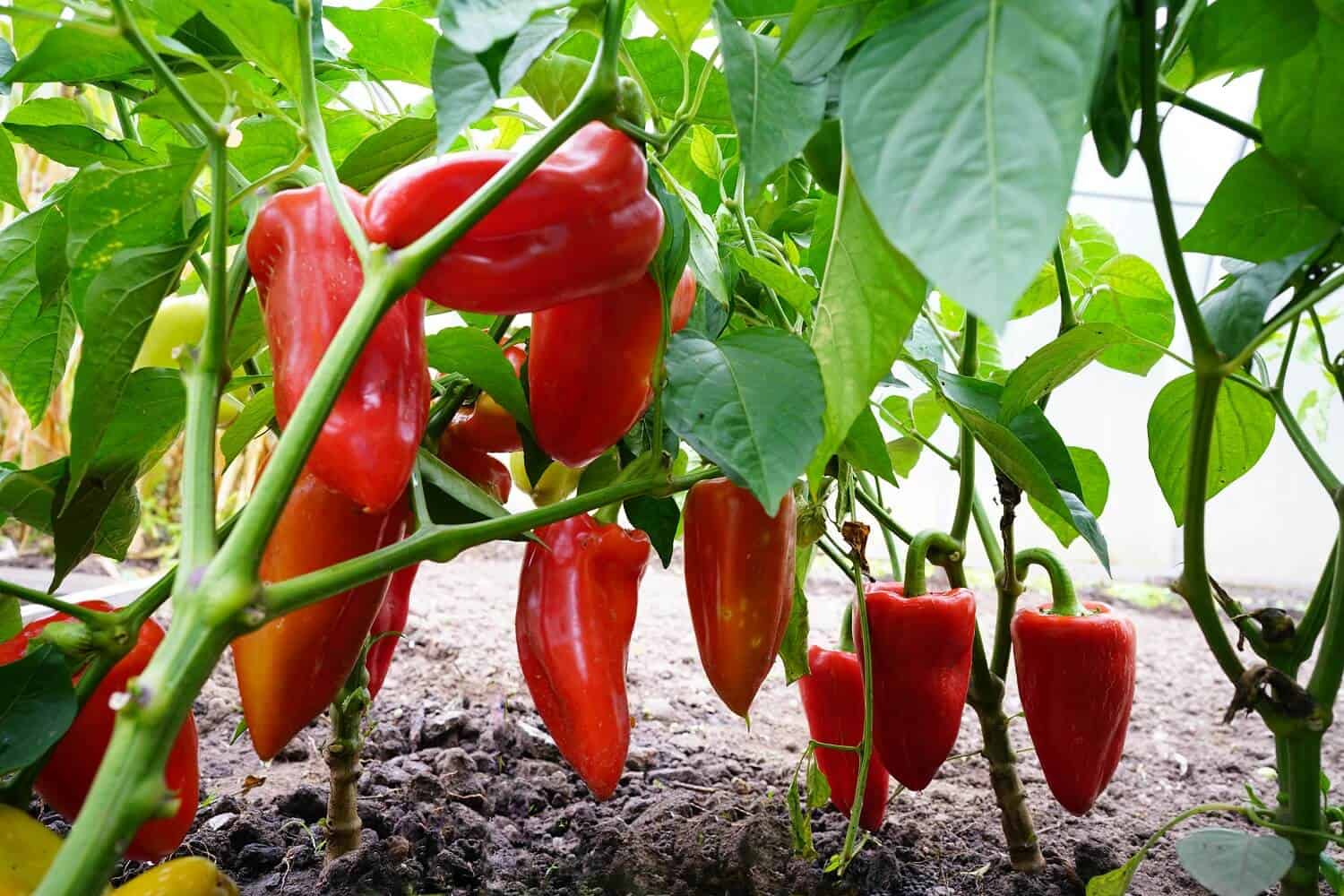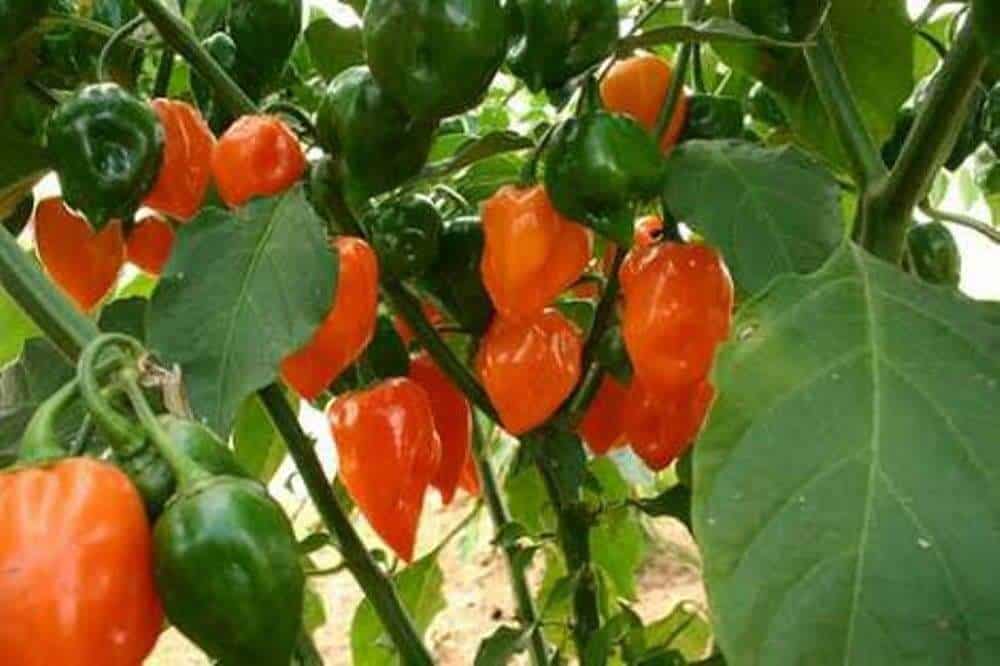There are various types of pepper plants to grow in your garden. Some are easy on the taste buds, while others are a mild form of torture.
All peppers are part of the Capsicum family and include sweet and chili peppers (hot and spicy).
Peppers add an enticing bump of flavor to your cooking. Although it’s easier to find a variety of fresh and dried peppers at the grocery stores, growing some in your garden would be more fun and economical. This is without forgetting the beautiful spectrum of colors from the peppers as they mature and ripen.
It is now time to look at different peppers you can have at home.
Types of Pepper Plants to Grow in Your Garden
1. Habanero Pepper (Capsicum spp)
Habanero pepper is a warm, seasoned, firm chili pepper with beautiful yellow, brown, red, and orange fresh colors. It is one of the easiest peppers to grow in pots/containers and one of the world’s hottest peppers.
Due to its compact and bushy growth habits, habanero pepper is famous for balconies and gardens.
Its fruits are shiny and lantern-shaped with a fruity and spicy flavor and hotness of approximately 100,000 to 350,000 Scoville units.
2. Jalapeno Pepper (Capsicum annuum 'Jalapeno')
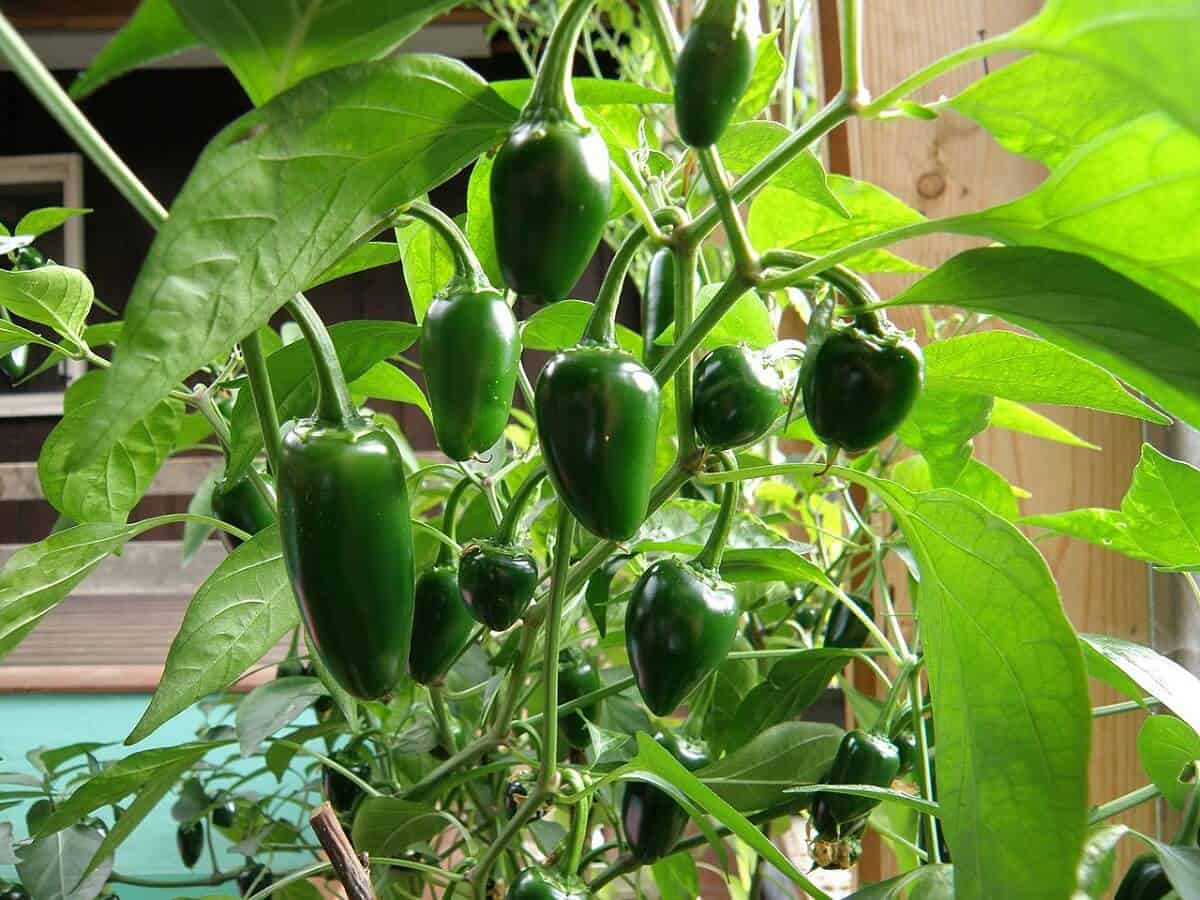
The Jalapeno Pepper is one of the easiest and fastest peppers to grow. It is a medium-sized chili pepper with mature fruits that are 2 to 3 inches long.
Although it originates in Mexico, Jalapeno pepper is grown worldwide for its flavor and mild heat level (Approximately 2,000 to 8,000 SHU Scoville Heat Units). These peppers are primarily used in salads, salsa, and Mexican food.
Other names for Jalapeno pepper include Chipotle chilies (smoked Jalapeno peppers), Cuaresmeno, Chile Gordo, and Huachinango.
3. Serrano Pepper (Capsicum annuum 'Serrano')
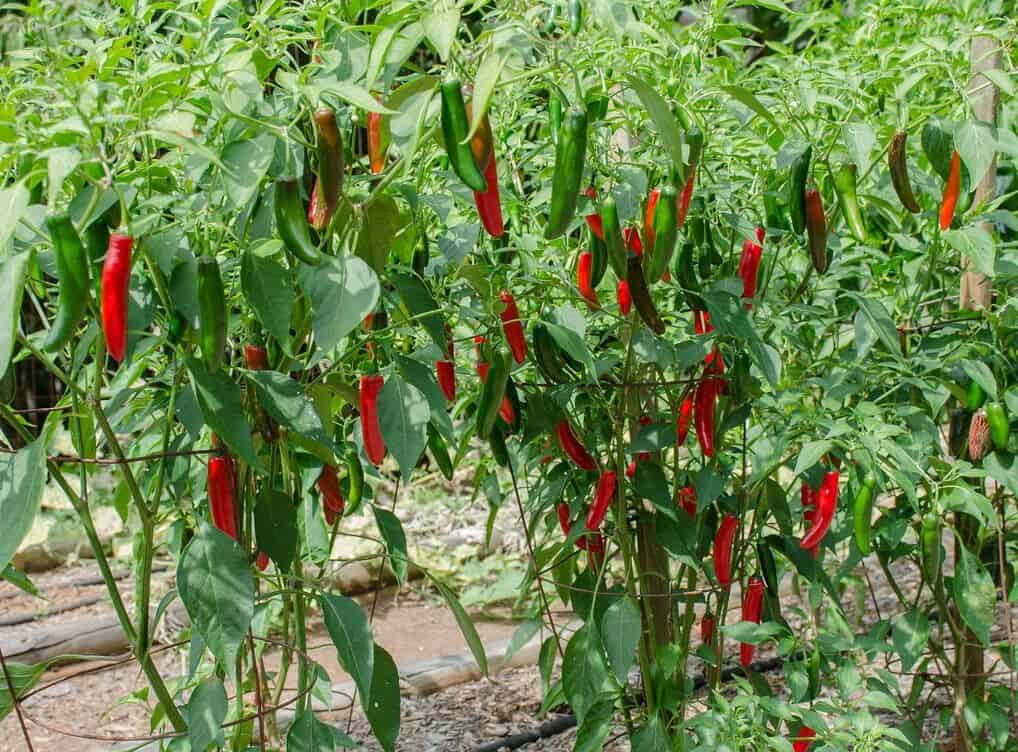
Serrano pepper originated in the mountainous regions of Puebla and Hidalgo Mexican states.
While it is similar in appearance to the Jalapeno pepper, it is smaller and much hotter (Ranges from 10,000 to 25,000 SHU). The serrano peppers can be found in various colors depending on ripeness, from green to yellow, orange, red, and brown.
These peppers are usually eaten raw, sliced, or chopped, mixed into salsas and guacamole, or cooked in soups and chilis.
4. Scotch Bonnet Pepper (Capsicum spp)
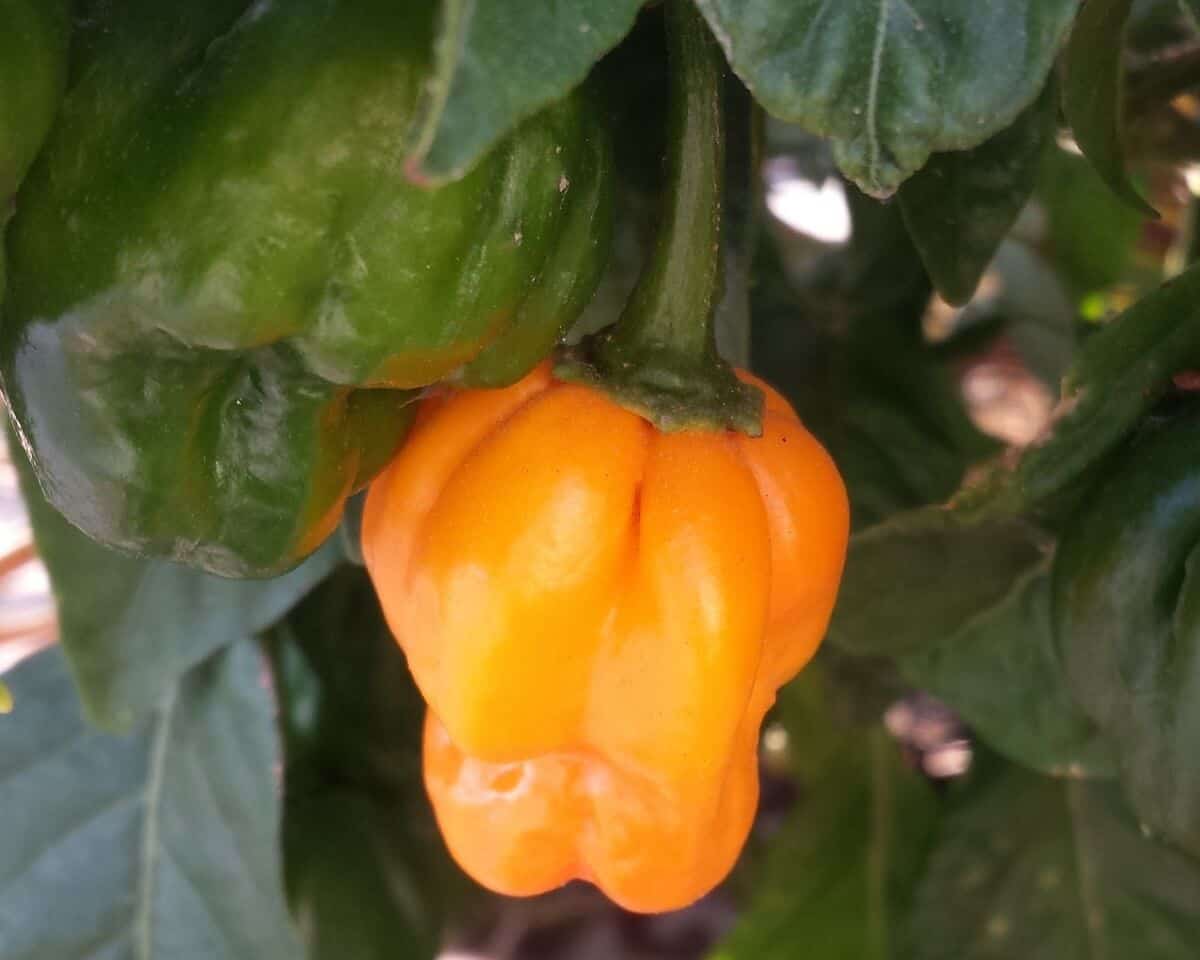
Scotch Bonnet is a fruity, fiery, and bright-colored pepper whose name comes from its resemblance to the Scottish "tam o’ shanter" hat.
However, Scotch Bonnet is primarily found in the Caribbean, Guyana, and the Maldives, where it’s used in regional cooking, particularly Caribbean jerk sauce and marinades.
It is one of the world’s hottest peppers, with a Scoville scale reading ranging from 100,000 to 350,000 SHU.
The Scotch Bonnet Pepper is also known as Bonney or Caribbean red peppers.
5. Anaheim Pepper (Capsicum annuum 'Anaheim')
Anaheim is a vigorously growing pepper plant with slightly tapering green fruits that turn maroon when ripe.
This pepper plant grows as a perennial; it can produce peppers for nearly three years or more when well cared for. It is an easy-growing upright (erect) pepper plant that grows to about 1.5 feet tall.
The Anaheim pepper is one of the best mild peppers to grow (1,000 to 5,000 Scoville units) and is excellent for stuffing and cooking.
6. Datil Pepper (Capsicum chinense 'Datil')
The datil pepper is a relatively small green to yellowish-golden aromatic hot pepper well-known in St. Augustine, where it is said to have been brought to Florida by Minorcans.
The flavor of a datil pepper is unique in that it bears a sweet, fruity tang coupled with its spiciness.
Datil pepper is similar in heat index to a habanero, hitting around 100,000 to 300,000 SHU. But unlike habaneros, datil peppers are sweet, with a fruitful tangy taste.
7. Cayenne Pepper (Capsicum spp)

Cayenne pepper is also known as Guinea spice, cow-horn, aleva, bird, or red pepper.
The cayenne is a long, skinny pepper closely related to Jalapeno and bell peppers. However, Cayenne pepper is much hotter, with a Scoville scale reading of approximately 25,000 to 50,000 SHU.
This chili pepper plant can grow to about 2 to 4 feet tall. The immature cayenne pepper pods are green but gradually build in spice level as they ripen and turn red, ready for harvesting.
8. Poblano Pepper (Capsicum annuum var. annuum 'Poblano')
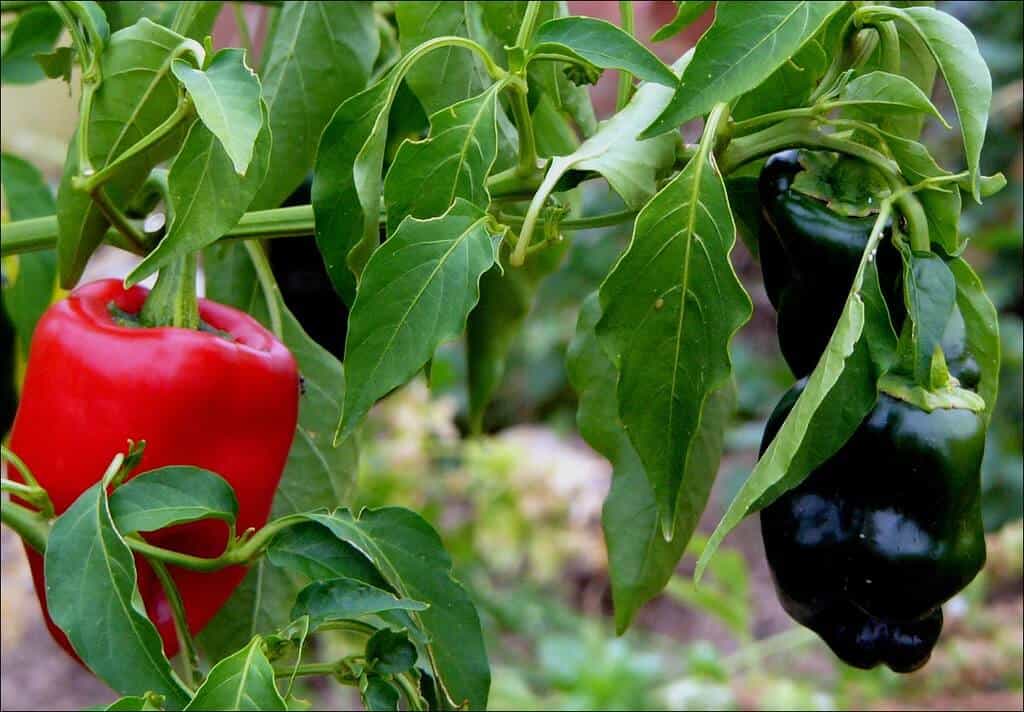
The poblano is a mildly spicy pepper (1,000 to 2,000 Scoville units) first grown in the Mexican state of Puebla, hence the name ‘Poblano.’ The Poblano pepper can be as large or even more extensive than a bell pepper but is skinnier and has a pointed tip.
This famous Mexican chili pepper can be used as a green pepper (eaten unripe) or red pepper (eaten ripe).
The Poblano pepper is also known as ancho chili pepper (a ripened and dried Poblano pepper).
9. Tabasco pepper (Capsicum frutescens 'Tabasco')
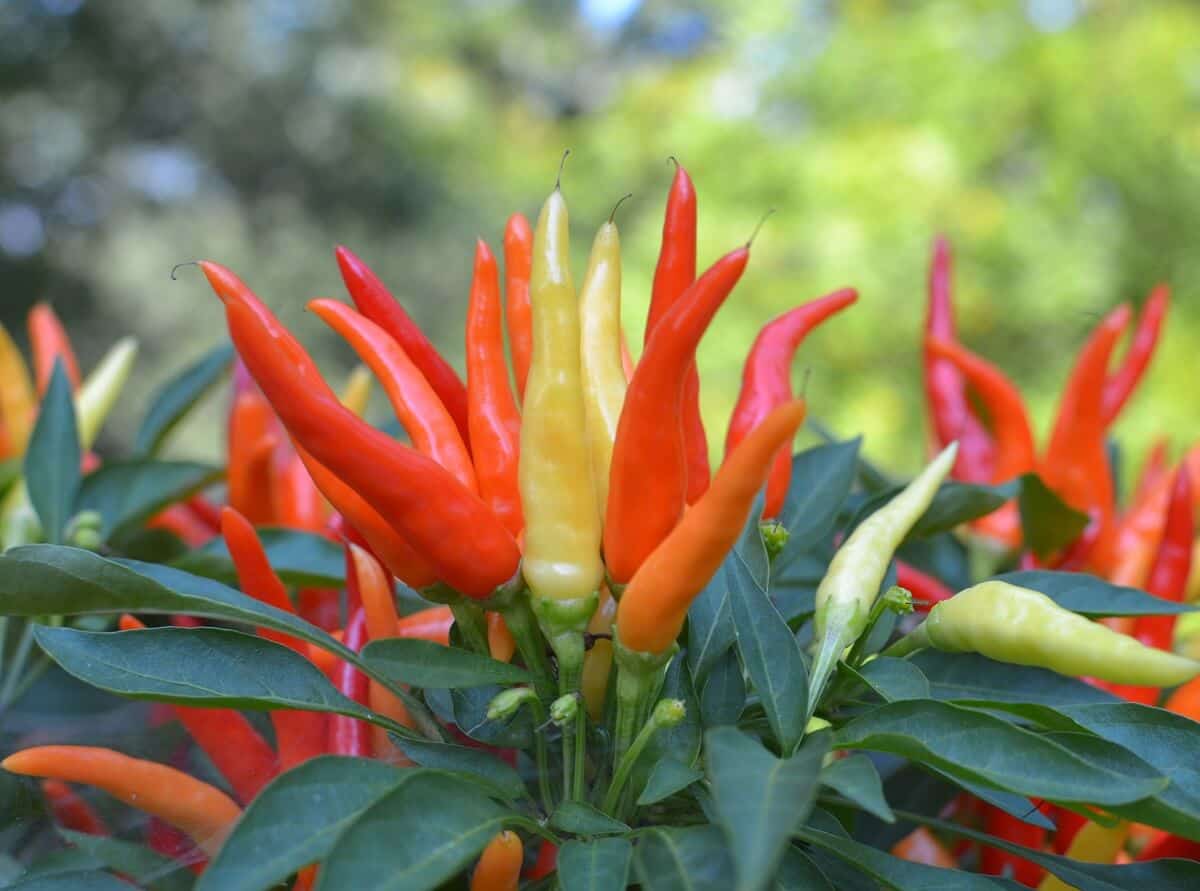
Tabasco pepper is among the best types of pepper plants whose peppers grow straight up on the vine. This pepper is native to the Mexican state of Tabasco and is mainly used to infuse vinegar and as the central seasoning in the hot sauce of the same name.
As they ripen, tabasco pepper changes color from yellow to orange and, finally, a beautiful red shade. These colors and the growth habit make the Tabasco pepper a lovely option for landscaped home gardens.
The Tabasco pepper is medium-hot, with a Scoville rating between 30,000-50,000 units.
10. Thai Chili Pepper (Capsicum annuum 'Bird's Eye')

Thai chili pepper is also known as bird’s eye or bird’s chili. This pepper originated from Mexico, Central America, or South America but is now one of the most popular peppers commonly grown in South and Southeast Asia.
It is easy to confuse Thai chili peppers with cultivars derived from C. frutescens because of their similarities in appearance. However, the Thai chili plants grow up to 6 feet tall and feature small, tapering fruits about an inch long.
Thai’s hotness ranges between 50,000 to 100,000 Scoville units.
11. Chiltepin Pepper (Capsicum annuum var. glabriusculum)
The chiltepin peppers are tiny little peppers that are round or oval-shaped, with colors varying from orange to red at maturity. These peppers grow in the wild throughout much of the U.S. and Mexico. Chiltepin peppers are pretty spicy and measure up to 100,000 Scoville Heat Units.
These peppers are often dried and crushed for spices and seasoning to create a smoky flavor.
Chiltepin peppers are also commonly known as Indian pepper, chiltepe, and chile tepin, as well as turkey and ‘mother of all peppers’12. Siling Labuyo (Capsicum frutescens 'Siling labuyo')

Siling Labuyo is the smallest hot chili pepper in the world (smaller than Thai chilies). It is characterized by triangular fruits that grow pointing upwards, and its leaves are relatively small (approximately 50 to 65mm) and elongated with pointy tips.
The Siling Labuyo peppers look similar to Thai chilies, but Siling Labuyo tends to be more rounded (less pointy) and a little shorter than Thai peppers.
In addition to this, Siling Labuyo has rated at about 80,000 to 100,000 Scoville heat units, hotter than Thai peppers.
The fruits and leaves of a Siling Labuyo are used in traditional Philippine cuisines.
13. Bhut Jolokia (Capsicum spp)
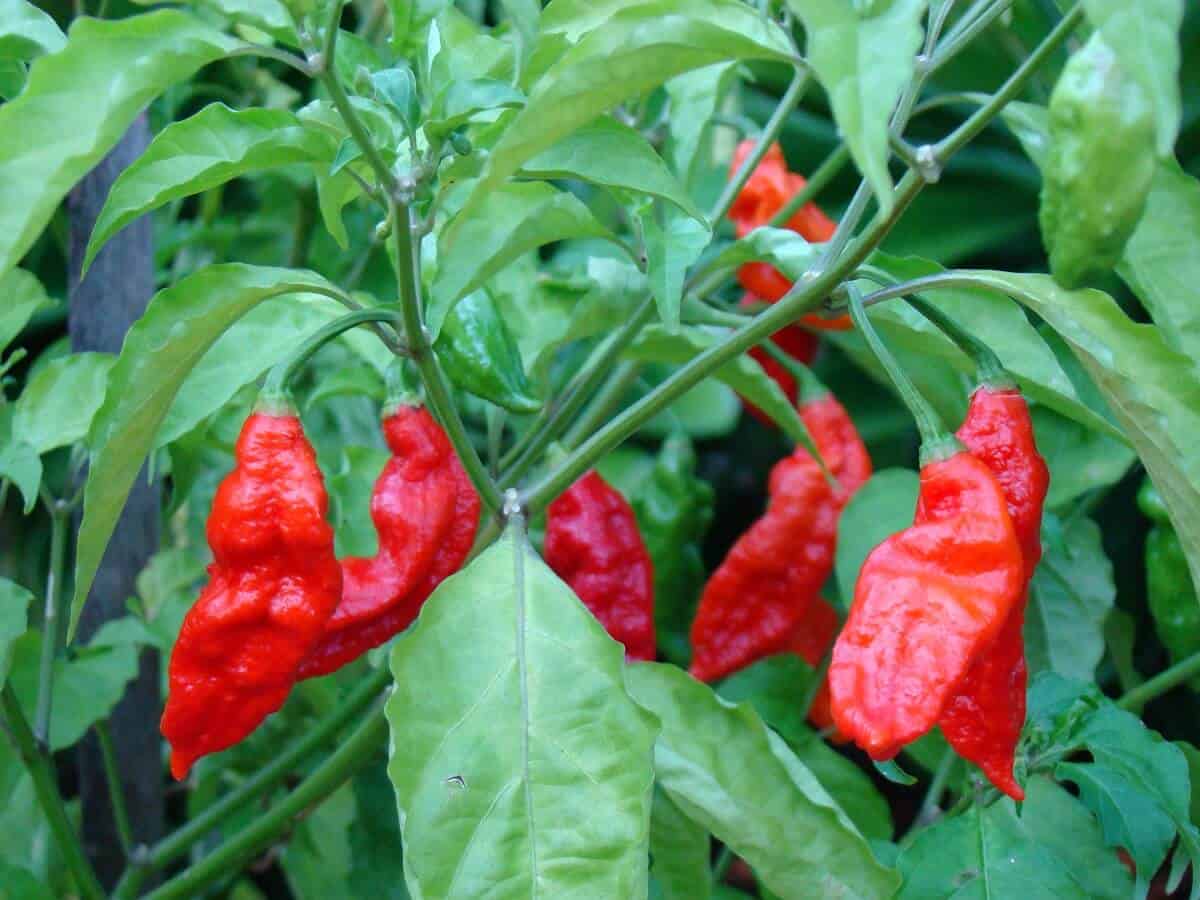
The bhut jolokia pepper is an interspecies hybrid (mostly Capsicum chinense with Capsicum frutescens) and one of the most unique peppers.
Other names for bhut jolokia pepper include naga Jolokia, Bih Jolokia, ghost pepper, ghost chili pepper, red naha chili, and ghost chili.
Bhut jolokia peppers are used fresh or dried as an ingredient in spicy foods, and it is the third hottest pepper in the world at 1,041,427 Scoville Heat Units.
14. Carolina Reaper (Capsicum chinense 'Carolina Reaper')
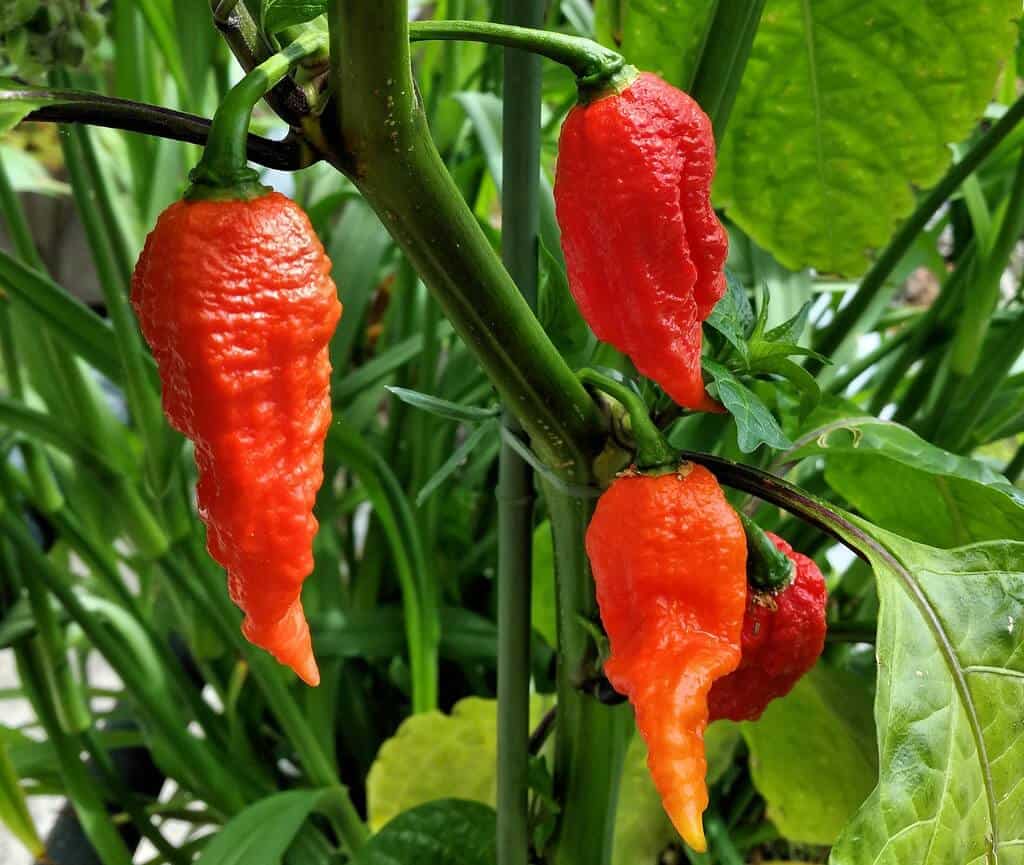
Carolina Reaper is one of the best types of hot pepper plants to grow. It is currently the hottest pepper in the world, with approximately 1,400,000 – 2,200,000 Scoville Heat Units.
The Carolina Reaper pepper was created by crossing a Pakistani Naga with a Red Habanero type from St Vincent’s Island in the West Indies and bred in South Carolina.
The pods of a Carolina Reaper are small and have a classic scorpion-like tail (a distinctive characteristic of a Carolina Reaper).
15. Sweet Peppers (Capsicum spp)
Sweet peppers come in various colors (green, red, orange, yellow, and purple). As per the published studies, there are over 200 cultivars of bell peppers worldwide.
Due to their size and mild-sweet taste, sweet peppers are perfect in stuffing but are also incredibly adaptable and add flavor to any dish they are used in.
They have zero SHU pungency with thick flesh and sweet flavor when ripe, hence the ‘name sweet peppers.’ They’re commonly referred to as bell peppers.
There are different types of sweet peppers, for example, Red sweet Bell Peppers, Italian Frying Peppers, Purple Bell Peppers, Roasting Pimentos, Cubanelle peppers, Green bell peppers, Yellow Bell Peppers, and cherry peppers.
16. Ornamental Peppers (Capsicum spp)
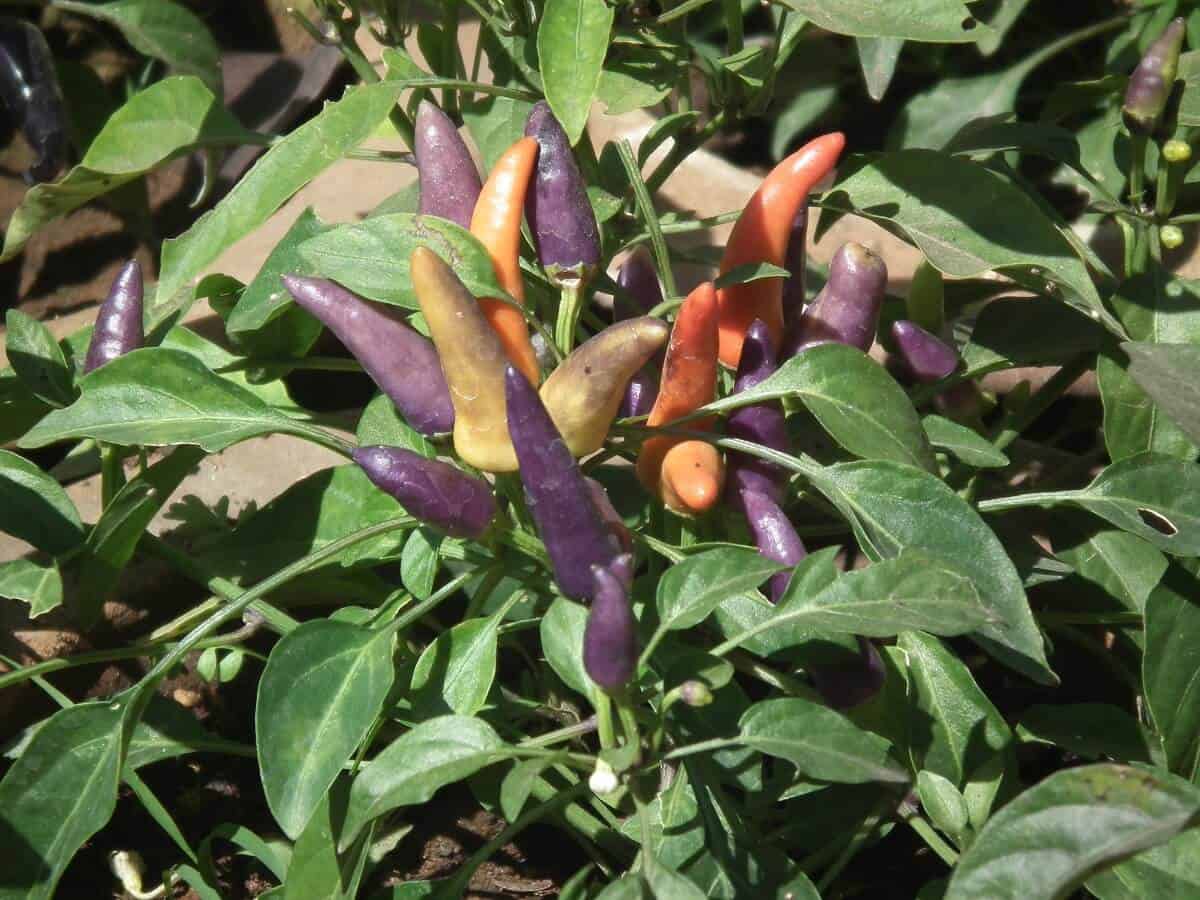
The ornamental pepper plants are admired by many gardeners for their colorful fruits in shades of red, orange, yellow, purple, black, and white. It is easy to find multiple colors present on one plant simultaneously, as the fruits’ color changes as they mature and ripen.
Although ornamental peppers are safe to eat, most gardeners grow them for their attractive color and decorative qualities rather than their flavor (extremely hot).
Caution: The leaves of ornamental peppers are toxic to humans and pets.
Examples of ornamental peppers include Masquerade, Purple Flash, Medusa, Black Pearl, Chilly Chili, Aurora, Tangerine Dream, Sangria, Cajun Belle, and Chinese 5-Color.
Conclusion
You have just seen the various types of pepper plants for your garden. Some of them, for example, the Carolina Reaper, are extremely hot, while others, like the bell peppers, are sweet.
Apart from this, you have seen that there are ornamental peppers like Masquerade, Purple Flash, Medusa, Black Pearl, and many more that add dazzling bursts of colors from red, purple, yellow, orange, black, to white for an alluring garden.
Do you know of other types of pepper plants that haven’t been mentioned in this article? Let us know in the comments.
Editor's Note: This post was originally published on April 16, 2021, and has been revamped and updated for accuracy, grammar, and comprehensiveness.
